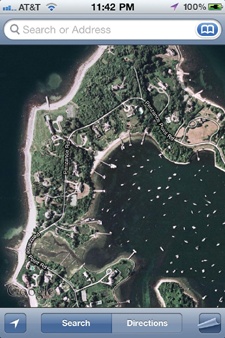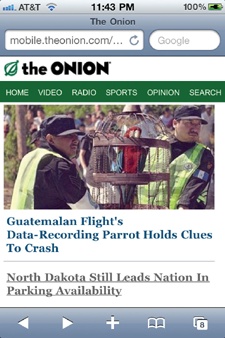Chapter 10. Getting Online
The iPhone’s concept as an all-screen machine is a curse and a blessing. You may curse it when you’re trying to type text, wishing you had real keys. But when you’re online—oh, baby. That’s when the Web comes to life, looming larger and clearer than on any other cellphone. That’s when you see real email, full-blown YouTube videos, hyper-clear Google maps, and all kinds of Internet goodness, larger than life.
Well, at least larger than on most other cellphones.


A Tale of Three Networks
The iPhone can get onto the Internet using any of three methods—three kinds of wireless networks. Which kind you’re on makes a huge difference to your iPhone experience; there’s nothing worse than having to wait until the next ice age for some Web page to arrive when you need the information now. Here they are, listed from slowest to fastest.
Old, slow cellular network. Your iPhone can connect to data over the same airwaves that carry your voice, thanks to AT&T’s EDGE cellular data network or Verizon’s and Sprint’s 1xRTT version of the same thing. The good part is that it’s almost everywhere, so your iPhone can get online almost anywhere you can make a phone call.
The bad news is that it’s slow. Dog slow—sometimes dial-up slow.
You can’t be on a phone call while you’re online using ...
Get iPhone: The Missing Manual, 5th Edition now with the O’Reilly learning platform.
O’Reilly members experience books, live events, courses curated by job role, and more from O’Reilly and nearly 200 top publishers.

